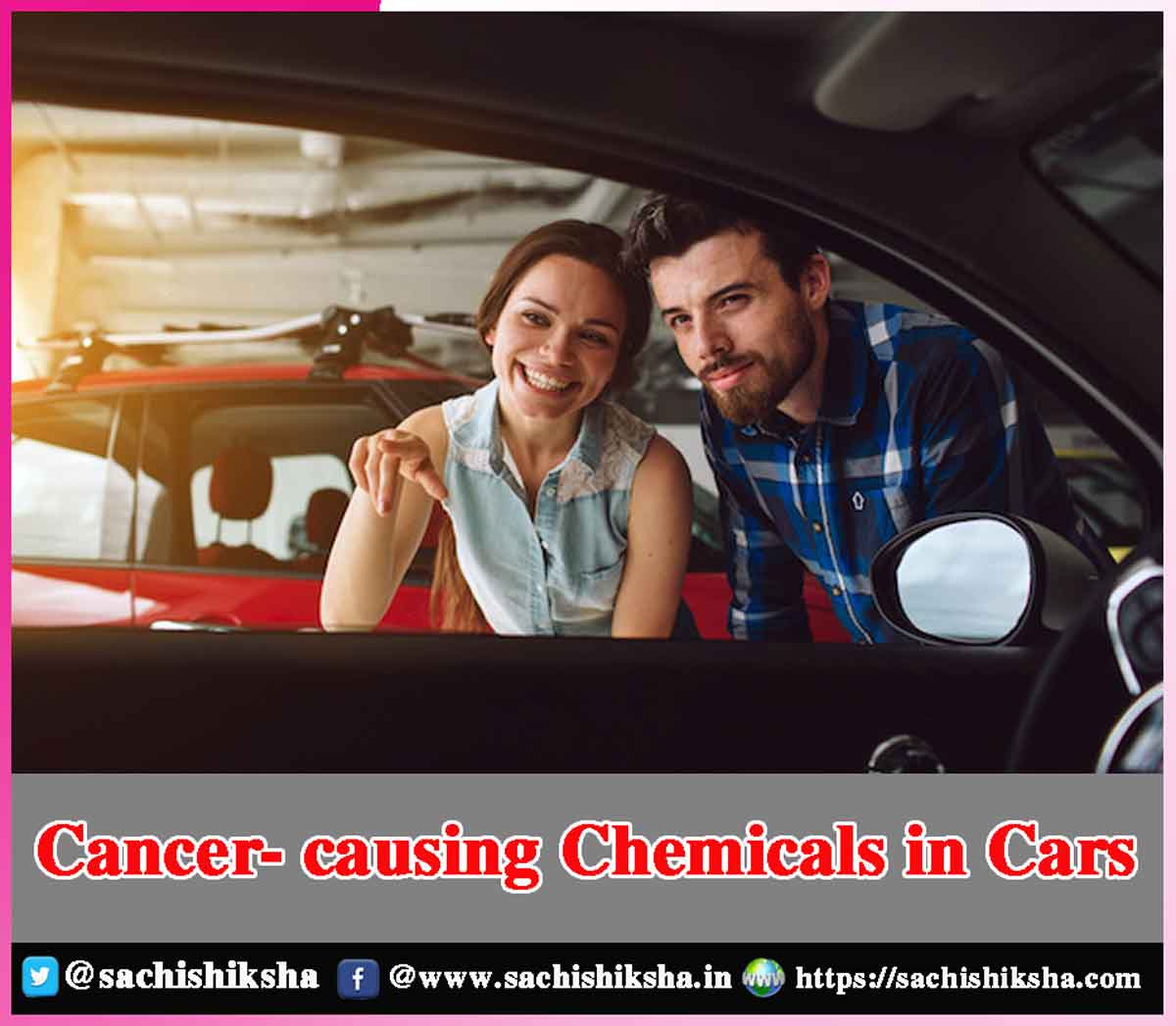Cancer- causing Chemicals in Cars
Introduction: Recent research has highlighted a concerning issue that many of us may be unaware of the fact that the air inside our cars may contain cancer-causing chemicals. This revelation comes from a study that investigated the presence of toxic substances within vehicle cabins, shedding light on a significant public health risk. This piece will explore the findings of the study, the chemicals involved, their sources, and the implications for public health and safety.
Table of Contents
The Study and Its Findings

One such study found that the levels of certain cancer-causing chemicals, like benzene and formaldehyde, were alarmingly high inside many cars. These chemicals are known for their harmful effects on human health, including an increased risk of developing cancer with prolonged exposure. The study’s findings are particularly troubling given that many people spend considerable amounts of time in their cars daily, whether commuting, traveling for work, or running errands.
Sources of Harmful Chemicals in Cars
Several factors contribute to the presence of carcinogenic chemicals in car interiors. Understanding these sources is crucial for addressing the problem effectively.
Materials Used in Car Manufacturing:
- Plastics and Synthetic Materials: Modern vehicles are constructed using a variety of plastics, adhesives, and synthetic materials. These components can release VOCs over time, especially when exposed to heat and sunlight. This process, known as off-gassing, can lead to the accumulation of harmful chemicals inside the car.
- Upholstery and Carpeting: The fabrics and carpets used in cars are often treated with chemicals to improve durability and resistance to stains and fire. These treatments can release formaldehyde and other toxic substances.
Vehicle Emissions:
- Fuel and Exhaust Fumes: Even with advancements in emission control technologies, traces of fuel and exhaust fumes can enter the vehicle’s cabin. Benzene, a component of gasoline, is a potent carcinogen that can find its way into the car’s interior through the ventilation system or through small leaks and seals.
Consumer Products:
- Air Fresheners and Cleaning Agents: Many people use air fresheners and cleaning agents to maintain a pleasant environment in their cars. However, these products can contain VOCs and other chemicals that contribute to indoor air pollution.
Environmental Factors:
- Ambient Pollution: Cars traveling through areas with high levels of industrial pollution or heavy traffic can draw in contaminated air through their ventilation systems. This can increase the concentration of harmful substances inside the vehicle.
- Health Implications : The presence of carcinogenic chemicals inside cars poses significant health risks. Long-term exposure to these substances, even at low levels, can increase the risk of developing various types of cancer. For example:
- Benzene: Prolonged exposure to benzene is linked to an increased risk of leukaemia and other blood disorders. Benzene can suppress bone marrow function, leading to a decrease in red blood cells and contributing to anaemia.
- Formaldehyde: Exposure to formaldehyde can cause respiratory problems, skin irritation, and has been classified as a human carcinogen, linked to cancers of the nasal cavity and sinuses. Children, the elderly, and individuals with pre-existing health conditions are particularly vulnerable to the harmful effects of these chemicals. Given that many families spend considerable time traveling together in cars, the potential health impact is significant.
Mitigation Strategies
Addressing the issue of toxic chemicals in cars requires a multi-faceted approach involving manufacturers, regulators, and consumers.
- Improving Car Design and Materials: Car manufacturers need to prioritize the use of low-emission materials and reduce the reliance on harmful chemicals in the production process. Innovations in material science can lead to the development of safer alternatives for car interiors. Implementing better ventilation and air filtration systems in vehicles can help reduce the concentration of harmful substances inside the cabin.
- Regulatory Measures: Governments and regulatory bodies should establish stricter standards for the allowable levels of VOCs and other harmful chemicals in vehicles. This can drive manufacturers to adopt safer practices and materials. Regular testing and certification processes for new car models can ensure compliance with these standards.
- Consumer Awareness and Action: Consumers should be informed about the potential risks associated with car interiors and take steps to minimize exposure. This can include avoiding the use of chemical-laden air fresheners and cleaning agents. Regular airing out of the car, especially after it has been parked in the sun, can help dissipate accumulated VOCs. Choosing cars with interiors made from natural or low-emission materials can also be a safer option.
The Role of Further Research
Continuous research is essential to deepen our understanding of the health risks associated with chemicals in car interiors and to develop effective mitigation strategies. Longitudinal studies tracking the health outcomes of individuals with high exposure to car interiors can provide valuable insights into the long-term effects of these chemicals. Moreover, research into new materials and technologies can lead to innovations that reduce or eliminate the release of harmful substances in vehicles. Collaborative efforts between scientists, car manufacturers, and policymakers are crucial in driving progress in this area.
Conclusion
The discovery that people are breathing in cancer-causing chemicals in their cars is a stark reminder of the hidden dangers present in everyday environment. While the convenience and necessity of cars in modern life are undeniable, it is equally important to address the health risks associated with prolonged exposure to harmful substances within these vehicles. Through a combination of improved manufacturing practices, stricter regulations, increased consumer awareness, and ongoing research, it is possible to mitigate these risks and ensure a healthier future for all.














































